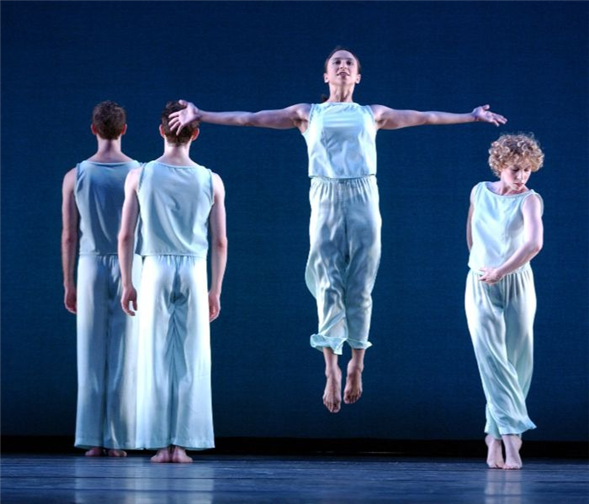Translate Page

The venerable choreographer discusses his latest world premiere at the Mostly Mozart Festival
---
When a new dance by legendary choreographer Mark Morris is announced, his choice of music is always very telling. That's because he approaches scores with a musician's sophisticated ear and understanding, showcasing his deep historical knowledge of each piece he picks for inspiration.
His music selection is especially relevant when his Mark Morris Dance Group performs as part of Lincoln Center's Mostly Mozart Festival, which it does frequently. From July 10 to 13, the company is opening this year's fest with three works set to chamber music: revivals of V and Empire Garden, alongside the world premiere of Sport.
For this brand-new, Mostly Mozart-commissioned work, Morris chose Erik Satie's Sports et divertissements, a collection of 21 brief piano compositions, some as short as 15 seconds. Composed in 1914, the piece was published in a multimedia volume in the 1920s, with stylish drawings of athletic activities by Charles Martin complemented by witty prose poetry and calligraphy by Satie himself.
"It's one of the great pieces of music of the 20th century," says the 62-year-old Morris, who's set three other dances to the French composer's work. "Satie's music is often seen as quirky or eccentric, which I think is ridiculous. It's gorgeous. It's so easy to say that something is zany -- it usually means disrespect. I love Satie's music because it's very specifically Satie, and he's the best at a lot of things."
To create Sport, Morris didn't just listen to the music, he scrutinized the printed score. "Satie included instructions and pensées that are meant to help the pianist decide how to perform the piece," he says. "I used those to decide certain things to put on stage."
Satie's Sports et divertissements writings are droll and often priceless. A wonderful example is his preface, in which he explains the intention of his opening section thusly: "This chorale is a sort of bitter preamble, a kind of austere & unfrivolous introduction. I have put into it all I know about Boredom. I dedicate this chorale to those who don't like me. I withdraw."
Satie's music notations are also revealing. Morris cites a section titled "The (Perpetual) Tango." "The score has a repeat sign at the beginning and the end," he says. "It's actually meant to be played perpetually. You do as many repeats as you want. Famously, John Cage and friends did performances of it that lasted all night."
Meanwhile, Martin's illustrations depict a wide range of pastimes, from sports like tennis, racing, fishing, golf and "le yachting" to amusements such as fireworks, flirting and Italian comedy. While Morris is sure to take artistic license in his interpretations of these activities, he says, "Of course I do represent them to a certain extent," adding that "there's some interstitial dancing, just to clear the palate."
In addition to Sport, Morris is bringing back one of his most acclaimed and beloved works: V. Created in 2001 and set to Robert Schumann's Piano Quintet in E-flat major, it sends waves of dancers clad in either blue or green surging and cascading across the stage in brilliant patterns. Jane Moss, who curates Mostly Mozart, specifically requested the piece for this program.
Rounding out the lineup is Empire Garden, a 2009 work set to Charles Ives' Trio for Violin, Violoncello and Piano. "It goes on this program beautifully," says Morris. "The scale is right. It's been performed on and off, but not in New York for a while."
The always prolific Morris has been particularly busy of late. In addition to Sport, his Arrows. Eros., set to Handel, is set to premiere at California's La Jolla Music Society next month. And he's in the process of choreographing Dances for the Future, a reserve of new works specifically designed to debut posthumously.
Morris reports that the first of these has been completed, with a second one planned for this year. It's an unusual yet ingenious way to enhance the legacy of this singular dance-maker, and ensure that his influence continues -- even after his death.
---
Susan Reiter regularly covers dance for TDF Stages.
Top image: Mark Morris Dance Group performing V in London 2001. Photo by Robbie Jack.
TDF MEMBERS: Go here to browse our latest discounts for dance, theatre and concerts.